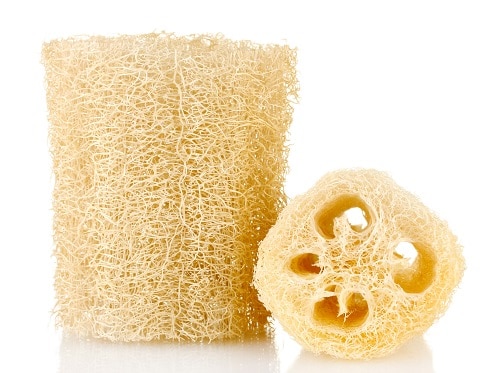How to Grow Luffa (Also Known as Loofah) as a Vegetable or Sponge

Planning a bountiful garden comes to mind when warmer weather arrives. If you are looking for something different to add to your garden this year, you might think about growing luffa gourds.
The luffa, also spelled as loofah, is a member of the cucumber family. The ridged gourd species is the Luffa Acutangula and the smooth gourd species is the Luffa Cylindrical. You can grow both species of luffa gourds as edible vegetables and as sponges.
Luffa gourds require three months to grow to maturity, but they are easy to grow in the hot, sunny Perth summer climate. Imagine how delighted your family and friends will when you surprise them with gifts of your very own hand-grown, organic luffa sponges.
Eating Luffas
When the young, green luffa plants are between 6 and 12cm in length, you can eat them in the same way as you eat zucchini, cucumber, and squash. You can use the young edible luffa plants as a substitute for other succulent vegetables in stews or soups.
The edible luffas are also delicious when sliced like cucumbers and sautéed in olive oil and garlic for a side dish. The colours of the large luffa flowers are lemon and yellow, and the flowers blossom throughout the summer. While the leaves of the luffa plants are edible like zucchini blossoms, but the vines of the luffa plants are not edible.
How Are They Grown?
The luffa gourds grow best on vines when the plants are positioned to grow downwards. The luffa vines grow upwards when planted against strong supporting frames, such as trellises, wooden fences, and old shed doors. You can help guide the vines to grow upwards by wrapping the outward growing vines around and in-between the frame’s openings.
You grow luffa plants from seeds and the time to sow the luffa seeds outdoors is in the spring after all chances of any frost have passed. The growing season for luffa plants is the same planting time required for tomatoes and eggplants. Mature luffa gourds grow 45.72 cm or more in length.
The black luffa seeds look like watermelon seeds and the luffa seeds are grown in seed trays during the spring months. For good germination, fill the seed trays with one of the excellent bagged potting soils available here at Bibra Lake Soils. You will need to be patient while waiting for the luffa seeds to form visible sprouts, which can take seven days or more to form roots.
Once the seeds start to sprout and the risk of any frost has passed, it is time to transplant the sprouts into the outdoor garden soil. Use a small mound formation to plant the young sprouts in groups of three, placed 20 to 30 cm apart and 20 cm deep along their supporting frame. The soil mounds are most productive when spaced six feet apart. Strong vines produce eight or more luffa gourds per plant.
Other vegetables that grow well when planted in the same soil near luffas are peas, beans, sweetcorn, and onions. However, the favorable luffa soil environment is not compatible for growing potatoes.
Where Should They Be Planted?
Luffas plants love the heat of the summer and thrive when planted in hot, sunny locations. They grow best when planted in organic soil like Bibra Lake Soils C-Wise Veggie Mix. To keep the soil moist and to protect the young plants, use one of Bibra Lake Soils weed-free mulches placed away from the stems.
Luffas plants are slow to grow and require 10 to 12 weeks to reach full maturity before you pick and lay them out to continue drying. The longer the luffa gourds remain on the vines, their mature yellow colour changes to tan as the inner cores continue to dry out. For strong and plentiful plants, keep the soil moist but not drenched, pick off the first flower growth, and remove the first four horizontal branches. Because luffa plants are sensitive to cold temperatures, remove any luffas still on the vines before the first frost of autumn.
Picking the Mature Luffas
Once the length of the luffa plants have grown longer than 12 cm and they have changed from green to yellow, they are best left to grow to their full mature size. After you pick the mature luffas, set them aside and allow them to dry for a few weeks. The picked gourds will lose some of their weight while they are drying. You can hear the new seeds moving around when you shake a dried luffa gourd.

Once dried, you break off the stems of the luffas and the outer layer will easily separate from the inner skeleton. You can cut the remaining hollow, fibrous inner cores into shapes for use as a scrubbing dishcloth, a scrubbing pad, or a shower sponge (displayed).
The natural colours of dried luffas cores are green, yellow, golden, and tan, but you can soak the dried luffas in peroxide or bleach to lighten the colour. The new seeds inside the plants will fall out when shaken and you can save the seeds for next year’s planting. The seeds will remain productive for many years when stored in a dark, dry location.
For help with the selection of potting soils, mulching materials, and garden planting soils, please call Bibra Lake Soils on (08) 9434 2290 to speak with one of our knowledgeable gardening team members. Wherever you live in the greater Perth area, we are here to assist you seven days a week.


